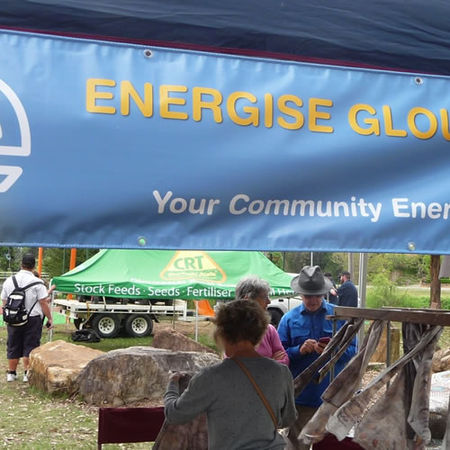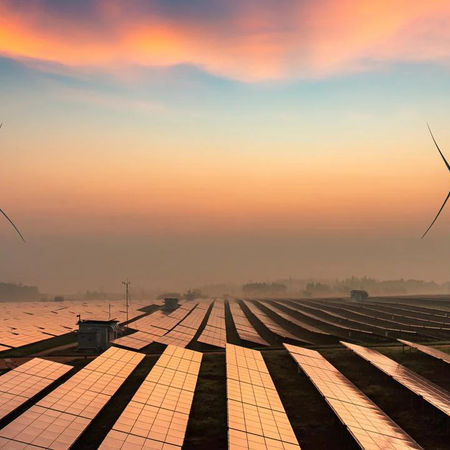
Chairman’s Note
This is our second newsletter and we hope you find it informative. Any feedback or comments will be appreciated and can be sent to the editor@energisegloucester.org.au.
Energise Gloucester is undertaking a feasibility study for its first solar PV project and some information about this is presented below. We have also developed our Communication Strategy which involves monthly newsletters, a website and Facebook page and several public information sessions during the year.
We are keen to hear from you about topics that you would like explored through these channels, or specific questions you have about alternative energy in your home or office, and possible opportunities for developing community energy projects in the district. Our first public information session in 2017 will contain information about what other communities are doing to develop and support alternative energy generation and use. Two of our members, Pat Burrows and Di Montague are attending a Community Conference in Melbourne in March so we look forward to the ideas they will bring back.
Yours with energy
David Marston (Chairperson)
Our First Solar Project
Energise Gloucester (EG) has met with The Board of the Bucketts Way Neighbourhood Group (BWNG) and together we have decided to develop a Solar PV system on the roof of the Neighbourhood Centre. This will provide the BWNG with much of their electricity needs at a reduced cost; enabling them to save money and utilise more funds on their core business, i.e. projects within the community. The Centre is a substantial user of electricity for its offices and facilities, including a freezer for Meals on Wheels.
We are now undertaking a feasibility study for the project to enable us to agree with the BWNG on the size of the system, a contract for electricity sales and the time it will take them to own the system. BWNG will pay less per unit (kWh) of electricity than they currently pay to their retail provider. EG will be providing this service with funds raised within the community and from private sources. We will also generate some funds through the sale of this electricity. This money will be used for other community projects such as assisting households understand their energy usage and hence reduce energy costs.

The solar PV system on the roof of the Centre will be quite large and possibly generate up to 100kWh/day. Once the details and contractual arrangements are agreed, EG will call for tenders to supply and install the system.
This is an exciting project in community energy and economic development in Gloucester.
Batteries
We have had several inquiries about where to get information about batteries. Here are a couple of helpful websites we’ve found.
This website has a table that compares 35 different battery systems using 24 different criteria. It also gives a calculation of how much each warranted kilowatt-hour of stored electricity will cost. The website also states that “once an individual products figure gets below 10 cents, battery storage is likely to be a worthwhile investment for a large number of households.” Currently, it lists Tesla batteries at about 20 cents and LG batteries at 30 cents per kWh.
This website has a number of FAQs (frequently asked questions) which give a brief overview of the safety considerations involved in battery storage in residential and small commercial applications (e.g. 1 kWh to 200 kWh in size). It’s aimed at those who have purchased or are already considering purchasing energy storage, and have some knowledge or experience. It does provide some limited background information on batteries to ensure that consumers are appropriately informed about safety. It points to further sources of information that may be helpful to those using a battery storage system
Our Solar Story – Pat Burrows
We arrived in Gloucester in May 2014 and bought a house that we plan to live in it for many years. Pete and I decided that this was a good opportunity to install solar panels on our house as we could reap the financial benefits for a long time.
We did most of our research on the internet, we also had a couple of sales people come to visit and advise us, but we found their advice confusing. It's was especially difficult to figure out whether or not you'll get a return on your investment. The advice we got seemed to be very unrealistic. It seemed to depend on the price of electricity going up at astronomical rates, and we weren't convinced that it would do that.
In the end, we found a site on the internet called solarquotes.com.au. It's got so much good advice, and it's easy to understand for ordinary people and much more credible than any of the sales people we talked to.
Initially, we used our electricity bills to collect information about our usage, and based on that decided we needed a 3kW system. We also decided based on what we read that microinverters, although slightly more expensive, would be a good investment. We chose the brand of panels, inverters and monitoring system based on advice from the web site and from the installer.

The site (solarquotes.com.au) also has a service which helps you connect with local installers and then to get comparative quotes once you've decided what you want. As we were new to town, we weren't aware of any local installers, and the nearest on the SolarQuotes web site was in Wingham. He also turned out to be a person who we felt we could trust especially after talking to the other two suggested installers who were both further away. If we were to do this again today, we would also consider the local Gloucester installers who we now know about! (We tend to prefer local – keeping money in the community.)
We paid $7,000 in total for the hardware, installation and monitoring system. We estimated at the time that we would save about $1,000 per year and therefore get a payback period of 7 years. We were too late for the 60 cent feed-in tariff but we did get RECs for our installation, which we signed over to our installer. (We have since heard that it's possible to sell these on the open market, but probably would have chosen to sign them over anyway.)
However, when I recently did an analysis of our usage, I discovered that we have only saved about $650 in the past twelve months, based on a price per kWh of 26 cents and a feed-in tariff of 6 cents. This gives us a payback time of maybe 9 or 10 years, assuming that prices will continue to go up. Still worthwhile though, as the panels have a 25 year warranty. And we are very happy with our choices – the system has operated without a hitch since we've had it, and being able to do that kind of analysis is very useful. I definitely recommend having a good monitoring system.
Opportunities for Improvement
We can see opportunities for improvement, as only 25% of our total usage for the past year has been from our solar generation; and almost half of the energy we are taking f
We can see opportunities for improvement, as only 25% of our total usage for the past year has been from our solar generation; and almost half of the energy we are taking from the grid goes on hot water, which is connected to a "controlled load" circuit which is only used at night. We are feeding two-thirds of what we generate back into the grid. So changing the way we use our energy is a big opportunity for us – for example, moving the hot water heating to the daytime or getting a more appropriate hot water system. We have yet to
investigate that.
Do you know the ???
Name of the first country in the world to power 100% of its electric trains with renewable energy.

Be the first person to send the correct answer by email to the editor and receive an EG Award.






